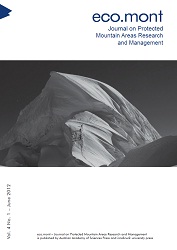
Eco.mont Vol. 4 Nr. 1, pp. 47-52, 2012/06/01
Journal on Protected Mountain Areas Research and Management

What the majority of people nowadays perceive as natural is in fact a landscape shaped, influenced and changed constantly by generations over the centuries. While until the mid-20th century, natural conditions determined human land use, modern agricultural economy doesn’t depend on soil conditions or climate. As a result, the typical regional landscape has been transformed into a more uniform, optimized production landscape that looks similar across Central Europe. The destruction of the traditional cultural landscape comes with a rapid loss of species. If the historic cultural landscapes could be saved from total eradication, it would be a big step forward to stop the extinction of species. Traditional man-made landscapes are worthy of protection and preservation, not only for of their ecological but also for their regional and identity-creating significance. The remaining vestiges of historic manmade landscapes should be captured for the entire area and assessed so that they can be incorporated in spatial planning. In the investigated area, it was possible to establish a clear relationship between the history of the region and the remaining historical elements. To make this relationship accessible to a broader public and to decision makers is an important challenge for the future.
Keywords: cultural-landscapes Alpine-Space ECONNECT-pilot-region-6